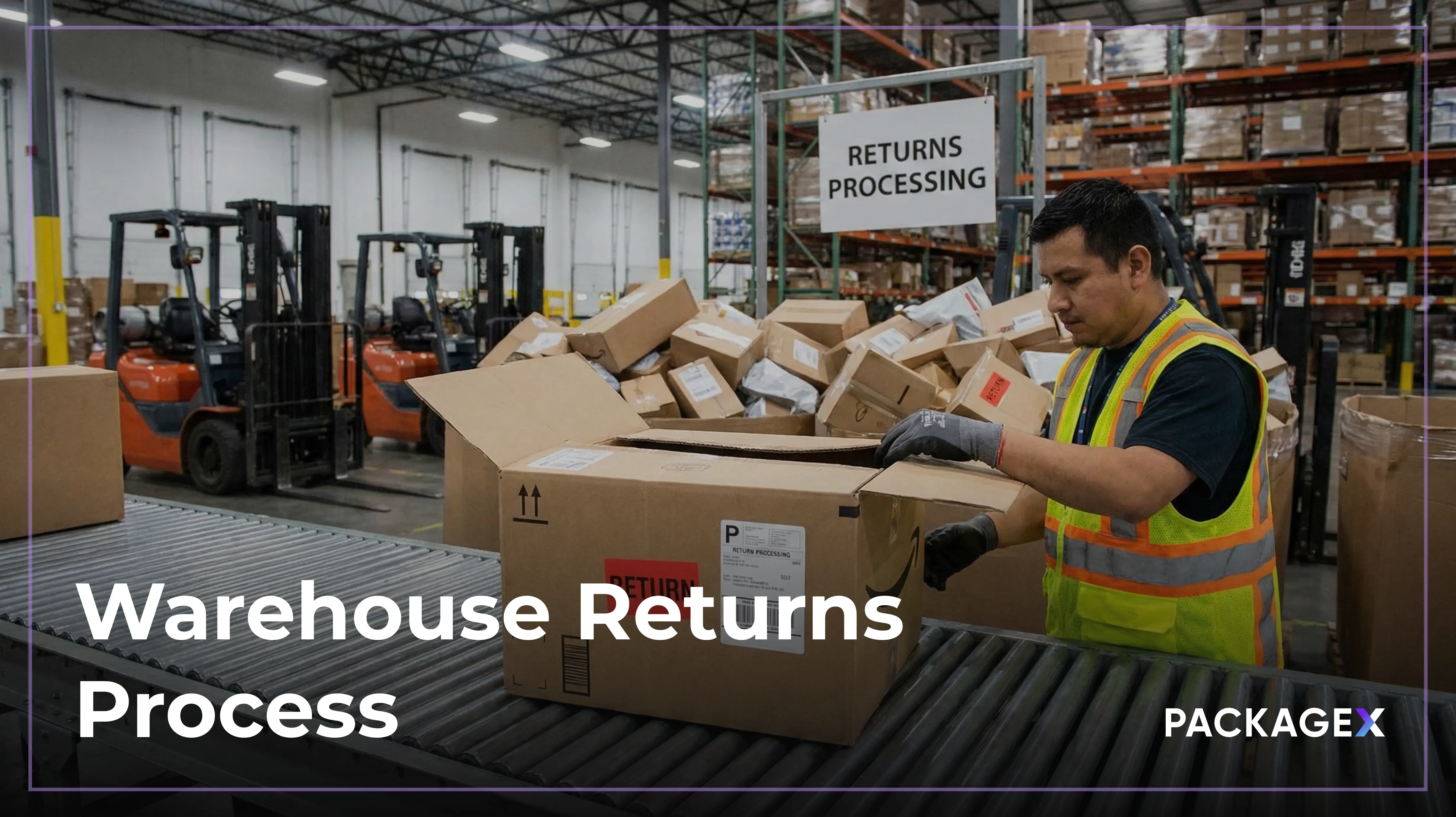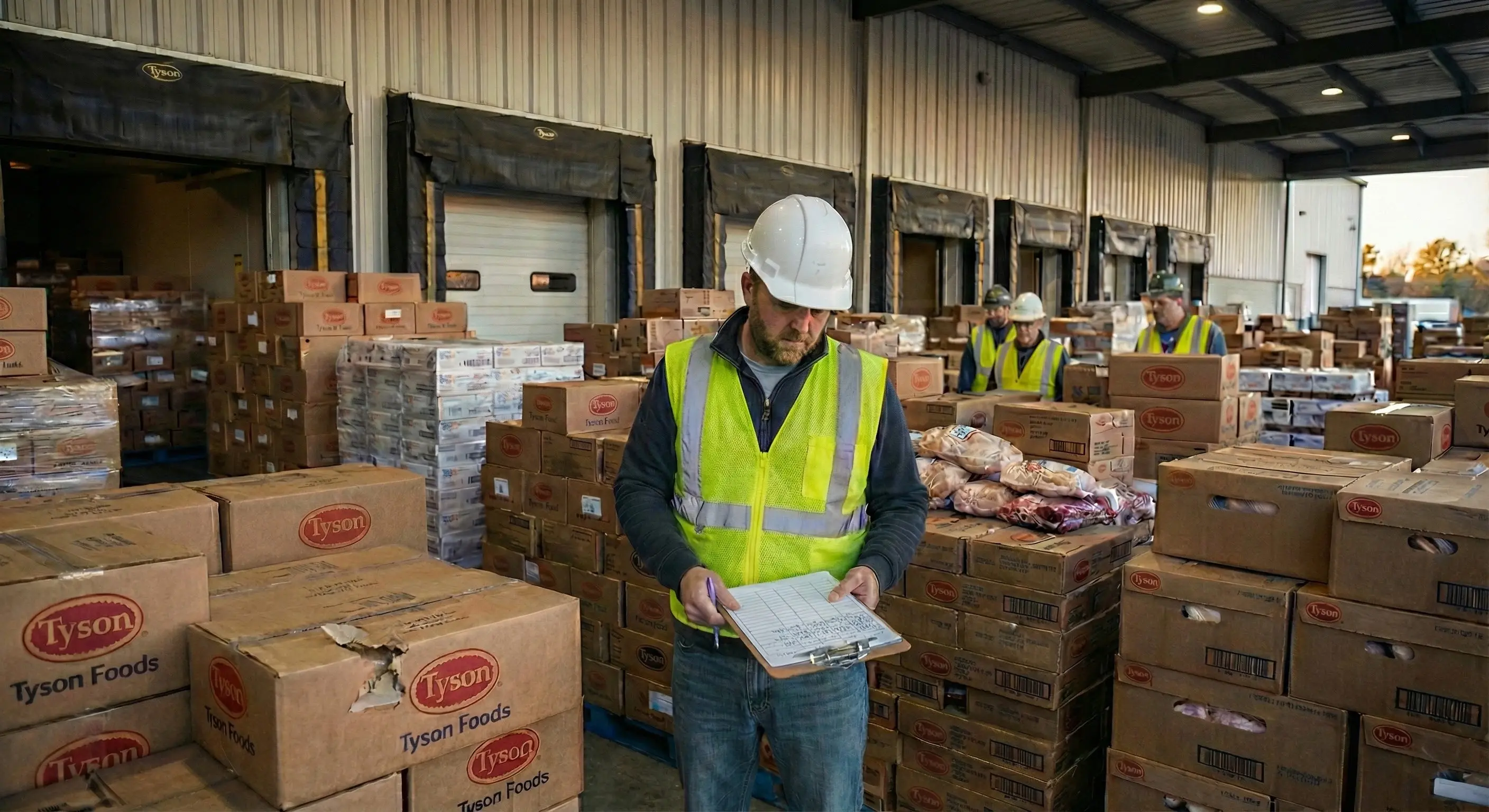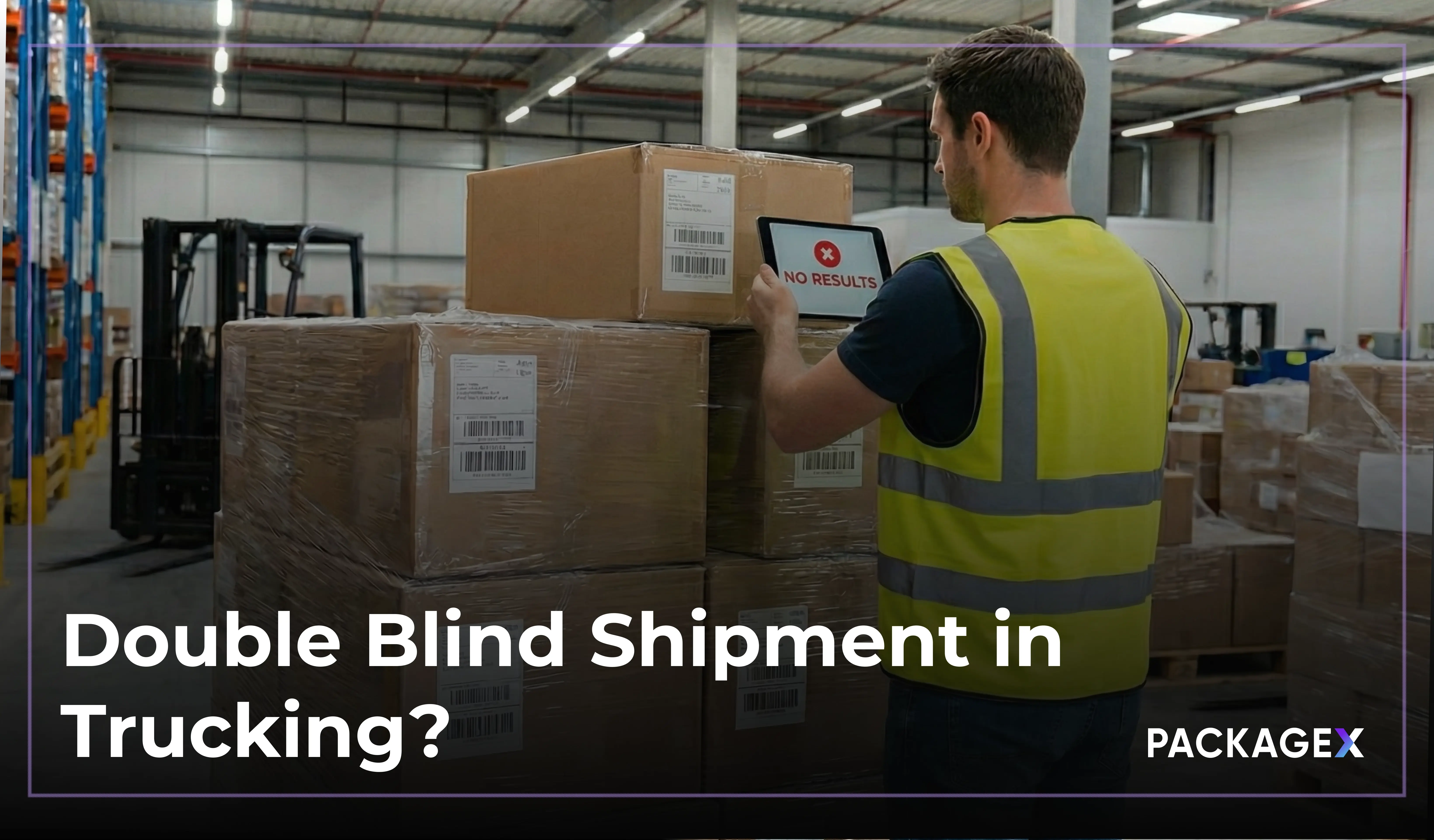This morning, I watched a delivery driver outside a Manhattan electronics warehouse staring at his phone, shaking his head. When I asked what was wrong, he showed me his route: Midtown Manhattan first, then all the way down to the Financial District, back up to Midtown East, down to Financial District again, then finally up to the Upper East Side.
"I'll be sitting in the same traffic three times today," he said. "Makes zero sense."
This kind of mess is happening everywhere. Electronics companies are losing money on routes like this, and most don't even realize how bad it's gotten.
Cost Crisis in Electronics Delivery
Electronics distributors face unique delivery challenges that make routing inefficiencies particularly expensive. Unlike shipping regular packages, these companies move sensitive components worth thousands per shipment. Every failed delivery doesn't just cost fuel and driver time, it risks damaging customer relationships and losing high-value contracts.
Recent industry data reveals the scope of this problem. Route inefficiencies cause 15-25% productivity loss across delivery operations. For electronics companies, this translates to missing critical delivery windows when manufacturers need components for production lines.
Failed first-delivery attempts cost $17+ per package, but for electronics shipments averaging $2,000+ in value, the real cost includes expedited re-shipping, customer complaints, and potential contract penalties.
Nationwide, 8% of deliveries fail on the first attempt, costing retailers approximately $200,000 annually in re-delivery expenses. Electronics distributors handling high-value components see even higher failure rates due to complex delivery requirements.
The scenario that driver described to me—zigzagging through the same Manhattan corridors multiple times—is a perfect example of what routing experts call "street-logic failure." Instead of efficiently sequencing deliveries north-to-south or grouping them by area, traditional dispatching creates time-wasting patterns that force drivers through the same congested areas repeatedly.
Electronics companies consistently leave money on the table while stressing drivers and frustrating customers.
What This Really Costs Your Electronics Operation
Beyond the obvious fuel and overtime expenses, poor routing creates cascading problems that hit electronics distributors particularly hard.
Manufacturing Line Disruptions happen when component deliveries fail. Customer production lines stop, and electronics manufacturers lose $260,000+ per hour during downtime. Missing even one critical resistor or capacitor shipment can halt million-dollar operations.
Driver Turnover increases when illogical routing burns out experienced drivers who understand electronics handling requirements. Replacing a trained electronics delivery driver costs $15,000+ in recruitment, training, and lost productivity.
Customer Relationship Damage occurs because electronics procurement managers have zero tolerance for delivery failures. Components needed for Friday's production run can't arrive on Monday. Late deliveries force emergency supplier switches and damage long-term contracts.
Inventory Carrying Costs rise when failed deliveries mean components sit longer in warehouses, tying up working capital and increasing obsolescence risk. In electronics, where product lifecycles measure in months, this quickly becomes expensive.
Competitive Disadvantage develops as companies struggle with routing inefficiencies, while competitors implement more intelligent systems. The efficient companies start promising shorter delivery windows, handling more volume, and gradually winning market share.
A major electronics distributor processing 50 million pallets annually demonstrates what's possible. Through intelligent logistics automation, they achieved an 80% reduction in staffing needs while improving accuracy to 99%+. Their success demonstrates how electronics companies can transform operations by strategically thinking about routing and workflow optimization.
Quick Wins You Can Start Today
Before investing in technology, electronics companies can implement manual routing strategies that deliver immediate improvements. These approaches work particularly well for distributors handling 20-50 deliveries per day.
Zip Code Clustering means grouping deliveries by geographic zones instead of processing orders chronologically. Electronics components destined for the same industrial park or manufacturing district should be batched together, regardless of when orders arrived.
Time Window Mapping works because electronics manufacturers typically have predictable receiving schedules. Map these patterns and sequence deliveries accordingly. Many facilities prefer morning deliveries before production shifts begin, while others want components delivered during designated receiving windows.
Component Priority Routing recognizes that not all electronics shipments are equally urgent. Production-critical components like processors and memory modules should be prioritized over maintenance supplies or development samples. Route high-priority deliveries first, then optimize remaining stops.
Traffic Pattern Intelligence is essential for metropolitan electronics distributors. Schedule deliveries to manufacturing districts during off-peak hours, and avoid crossing downtown cores during rush periods.
Vehicle Load Balancing ensures that electronics components, which vary dramatically in size and handling requirements, are distributed properly. Each delivery vehicle should have an appropriate mix of small components and larger equipment to maximize capacity utilization.
Driver Zone Specialization assigns drivers to consistent geographic territories so they develop expertise with specific customer locations, security procedures, and loading dock requirements.
These manual approaches can immediately improve routing efficiency by 10-15%. However, they require constant delivery management attention and become difficult to maintain as delivery volume grows.
When Manual Methods Hit Their Limits
Manual route planning works until it doesn't. Electronics distributors typically hit these breaking points:
Volume Scaling becomes impossible beyond 50 deliveries per day because manual planning becomes mathematically complex. A dispatcher trying to optimize 100 stops across multiple vehicles faces more possible route combinations than atoms in the observable universe, impossible to solve manually.
Dynamic Changes like customer requests for delivery time adjustments, emergency shipments, and traffic disruptions require constant route recalculation. Manual systems can't adapt quickly enough.
Multi-Constraint Optimization struggles when electronics shipments involve complex requirements: component temperature sensitivity, customer security procedures, driver certifications, vehicle equipment needs. Manual planning can't balance all variables simultaneously.
Performance Visibility remains limited with manual systems. You know something's wrong with your routes, but there's no way to measure exactly what or fix the specific problems.
Smart Technology That Actually Solves This Problem
Today's route planning technology uses smart algorithms to handle routing problems that would take humans hours to figure out. These systems can do things manual planning just can't.
Smart route planning looks at thousands of things at once—traffic patterns, when customers want deliveries, truck capacity, driver skills, customer needs, and figures out the best routes in seconds.
When things change during the day, accidents, customer requests, rush orders, these systems instantly recalculate new routes for every truck that's affected. No dispatcher intervention required.
Predictive Analytics allows smart routing systems to learn from historical data to predict delivery times, identify problem locations, and recommend operational improvements. They understand that electronics shipments to certain manufacturing facilities always take longer due to security procedures.
Computer Vision Integration enables advanced systems to automatically capture package information, track loading accuracy, and verify delivery completion. This gets rid of all the typing mistakes that slow down electronics distribution.
Instead of optimizing each truck's route separately, smart systems look at the whole fleet and coordinate everything for maximum efficiency. Sometimes, one truck might get a slightly longer route if it helps the entire operation save time.
Workflow Automation extends beyond routing to automate related logistics workflows, driver dispatching, customer notifications, exception handling, performance reporting, creating end-to-end operational efficiency.
Electronics companies implementing these technologies typically see 20-25% increase in daily deliveries using the same driver and vehicle resources, with 2-5 minutes saved per delivery stop through automated processes. Most distributors achieve return on investment within 6-8 months of implementing route optimization for faster shipping.
Real-World Use Case
Leading electronics distributors are already reaping substantial benefits from intelligent route optimization.
A major electronics distributor processing millions of components monthly implemented AI-powered routing and achieved 3x throughput improvement in processing operations, 99%+ accuracy in order fulfillment, 80% reduction in labor requirements, and complete elimination of manual route planning overhead.
Companies that have implemented smart routing typically see some impressive results: 25-40% faster delivery times, 15-30% less fuel usage, 20-35% better driver productivity, and 50-75% fewer failed delivery attempts.
The early adopters are now using their routing efficiency to win business from competitors, promising faster deliveries and actually delivering on those promises.
The Bottom Line for Electronics Distributors
Route inefficiencies are costing electronics distributors 15-25% of their delivery capacity every day. That translates to millions in lost revenue for major distributors who could be handling 20-25% more deliveries with the same resources.
Implement route optimization now, or watch competitors gain the advantage. Electronics companies optimizing their routes are adding 5+ deliveries per driver daily while building customer loyalty through superior service reliability.
Most electronics distributors achieve return on investment within 6-8 months through reduced costs and increased delivery capacity.
Frequently Asked Questions
How long does it take to implement delivery route optimization?
Most electronics distributors see initial improvements within 2-4 weeks of implementing manual optimization strategies. Tech solutions usually take 8-12 weeks to get fully running, but you'll start seeing benefits within 4-6 weeks.
What kind of return can you expect on route optimization?
Most electronics companies see 200-400% return on investment in the first year from lower fuel costs, better driver productivity, and being able to handle more deliveries. The exact return depends on current routing efficiency and delivery volume.
Can route optimization handle electronics-specific delivery requirements?
Modern routing systems excel at managing complex constraints common in electronics distribution—component sensitivity, customer security procedures, driver certifications, and specialized vehicle equipment requirements.
How does route optimization integrate with existing Enterprise Resource Planning systems?
The best route optimization systems connect easily with the major business software that electronics distributors already use. The integration usually handles automatic data sharing for customer info, orders, and delivery confirmations.
What happens when things change during the day?
When accidents happen, customers change their minds, or emergency orders come in, smart routing systems automatically figure out new optimal routes. This keeps everything running smoothly without manual intervention.




